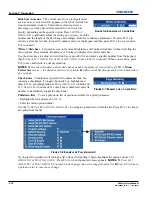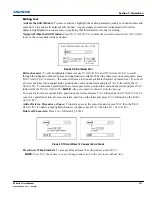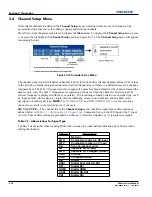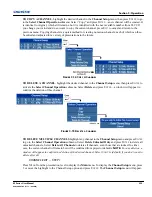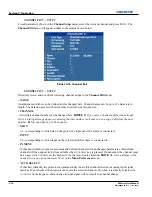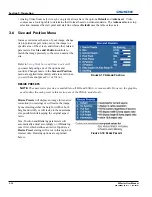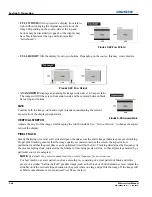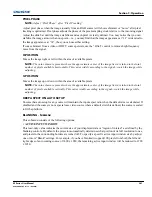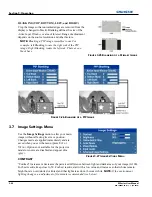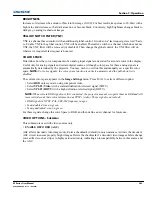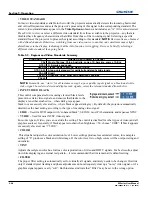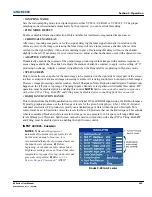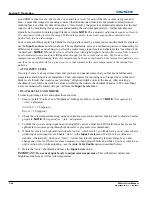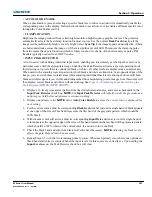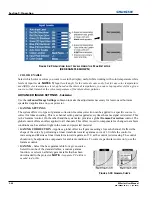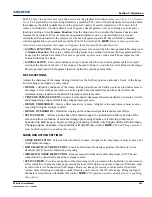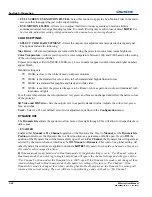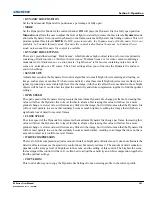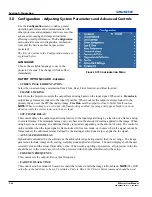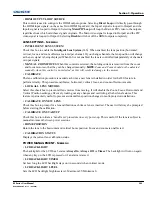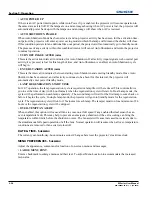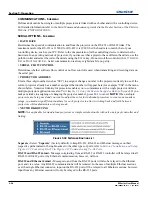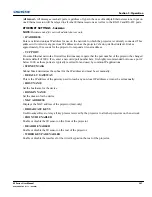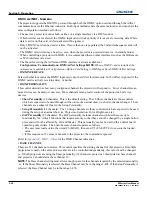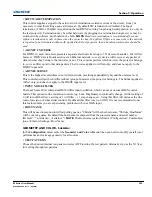
3-24
M Series User Manual
020-100009-05 Rev. 1 (09-2010)
Section 3: Operation
• VIDEO STANDARD
For most video standards available in the world, the projector automatically detects the incoming horizontal
and vertical frequencies and sets the projector’s processing of this signal to the corresponding standard. The
current video standard name appears in the
Video Options
submenu, and includes an “A” if it is auto-detected.
Press
E
NTER
to view or select a different video standard from those available to the projector—any that are
disabled have frequency characteristics that differ from those of the incoming signal. Selecting a specific
standard forces the projector to process the signal according to this standard.
NOTE:
Best results are obtained
with defined channels. Otherwise, switching from one video source to another can sometimes cause slight
disturbances in the display, indicating that the Auto function is struggling. Recover by briefly selecting a
different video standard, then going back.
Table 3.3 - Regions and Video Standards: Summary
NOTE:
Generally, use “Auto” for all instances except: a poor quality input signal or a black-and-white
video signal. In order to detect and display such signals, select the relevant standard from the list.
• INPUT VIDEO BLACK
This control compensates for incoming elevated black levels
present in certain video signals, and ensures that blacks in the
display are neither crushed (i.e., where dark greys appear
black) nor excessively elevated (i.e., where blacks appear dark grey). By default, the projector automatically
determines the best setting according to the type of incoming video signal:
•
0 IRE –
Used for DVD output with “enhanced black”, SECAM, most PAL standards, and Japanese NTSC.
•
7.5 IRE –
Used for most NTSC video signals.
For some types of video, you can override the setting. The control is disabled for other types of video (and all
graphics sources). Generally, if black appears crushed when brightness = 50, choose “0 IRE”. If black appears
excessively elevated, use “7.5 IRE”.
• COLOR
This slide bar adjusts the color saturation level. Lower settings produce less saturated colors, for example a
setting of “0” produces a black and white image. If the color level is too high, colors will be overpowering and
unrealistic.
•
TINT
Adjusts the red/green color hue for true color reproduction of video and HDTV signals. For best results, adjust
tint while displaying an external test pattern—it is recommended that tint remain at its default setting.
•
FILTER
The proper filter setting is automatically set for virtually all signals, and rarely needs to be changed. Override
only if standard pixel tracking and phase adjustments do not adequately clear up a “noisy” video signal, or if a
graphics signal appears overly “soft”. Both instances indicate that “Filter” may be set to the wrong option.
STANDARD
WHERE USED (Subject to Change)
PAL
Most of Europe, China, Australia, some of S. America, some of Africa
NTSC
N. America and Japan
SECAM
France, Eastern Europe, most of Africa
NTSC 4.43
A tape-only standard for partially-translated hybrid signals
PAL-M
Brazil
PAL-NC
Argentina, Chile, other Latin American countries
PAL 60
Summary of Contents for M Series
Page 1: ...M Series U S E R M A N U A L 020 100009 05 ...
Page 2: ......
Page 3: ...M Series U S E R M A N U A L 020 100009 05 ...
Page 14: ......
Page 46: ......
Page 120: ......
Page 131: ...Section 6 Troubleshooting M Series User Manual 6 7 020 100009 05 Rev 1 09 2010 FIGURE 6 1 ...
Page 132: ......
Page 148: ......
Page 152: ......
Page 167: ......

